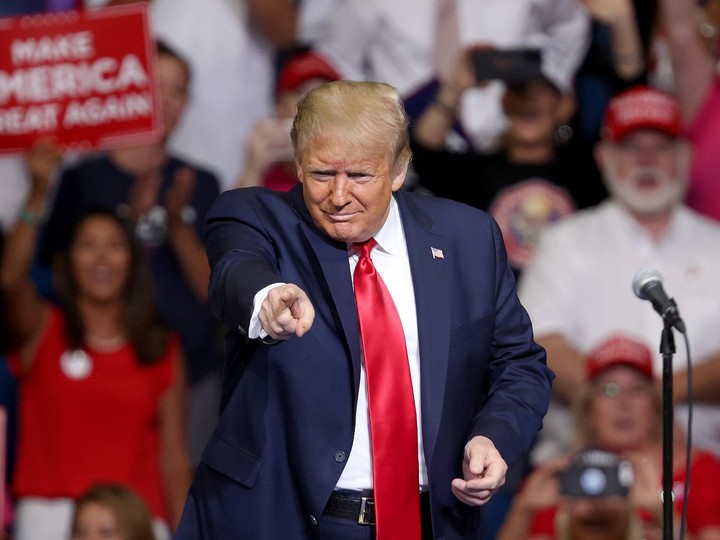the cdc
says travel increases your chance of getting and spreading covid-19 and has often recommended people stay home during the pandemic. it cautions that “airports, bus stations, train stations, and rest stops are all places travellers can be exposed to the virus in the air and on surfaces. these are also places where it can be hard to social distance. in general, the longer you are around a person with covid-19, the more likely you are to get infected.”other agencies, such as the texas medical association have
classified travelling by plane as a “moderate-high risk,” ranking it similarly to other activities such as hugging or shaking hands with a friend or eating inside a restaurant.the trump campaign has continued to travel across the country amid the pandemic, flying to the u.s. presidential debate in cleveland, ohio before heading to duluth, minnesota for a rally in a airport hangar the next day. hicks was reportedly aboard airforce one with the president.since the first few cases of covid-19 appeared in the united states, the president has been largely optimistic that the virus would
go away on its own. in the presidential debate on tuesday, he
chided democratic presidential nominee joe biden for frequently wearing a mask.“every time you see him, he’s got a mask. he could be speaking 200 feet away from them, and he shows up with the biggest mask i’ve ever seen.”still, despite the president’s attitudes toward covid-19, and the ways to prevent infection, having the virus is not to be taken lightly, and this is yet another reminder of why it’s important to follow guidelines around prevention.
don’t miss the latest on covid-19, reopening and life. subscribe to healthing’s daily newsletter covid life.
 3 minute read
3 minute read












